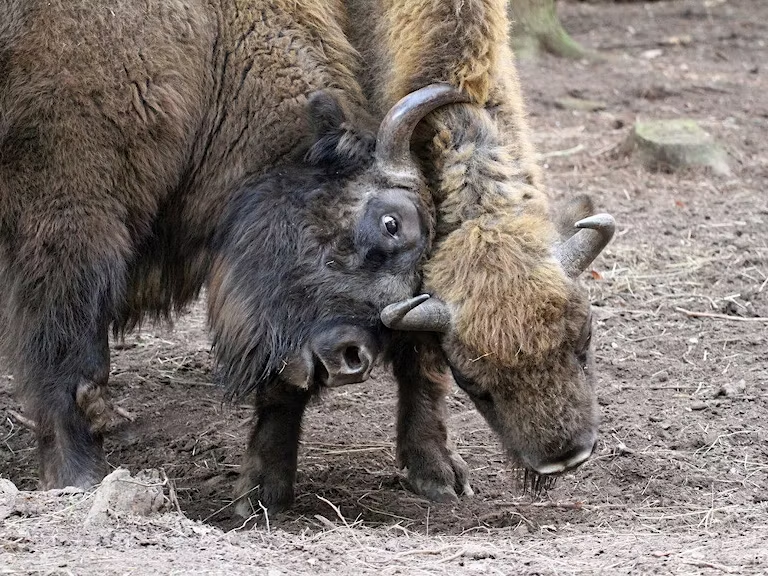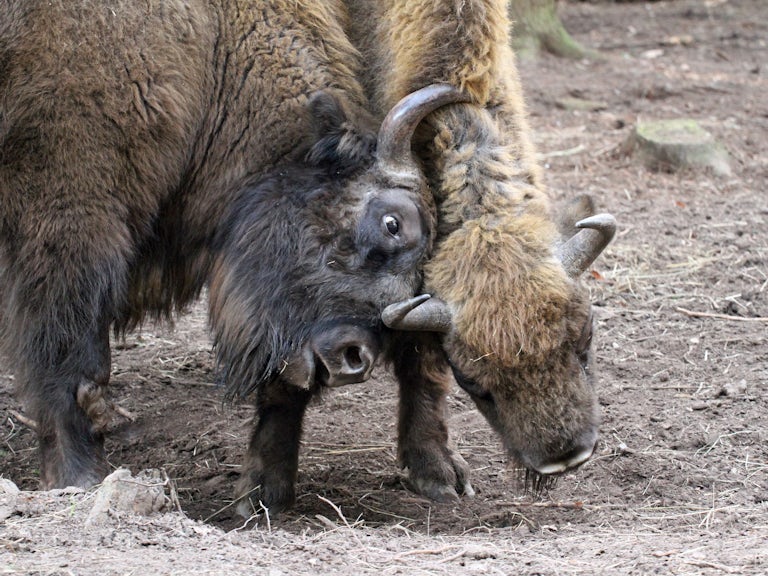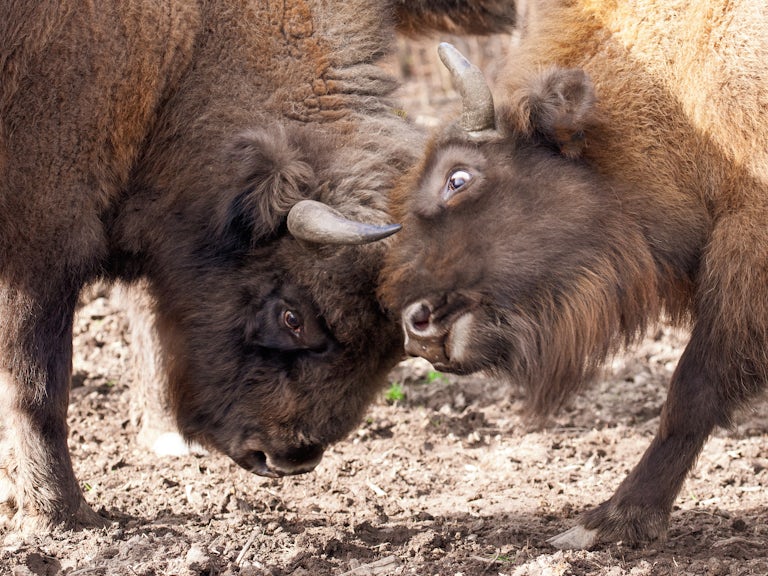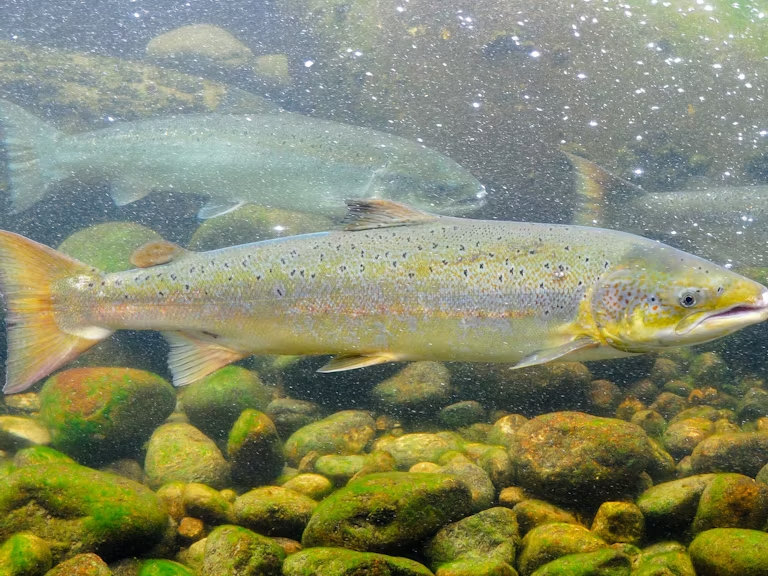European bison
Bison bonasus
Through grazing, foraging, wallowing and trampling, the hefty bison boosts habitat diversification.

How it shapes the landscape
Whereas the American bison possesses that characteristic stooped head profile, indicating a love for grass at ground level, the European bison’s head is set a little higher, reflecting their penchant for diversity. They graze grasses and herbaceous plants, and browse woody vegetation (especially in the winter and early spring, before the first flush of spring growth).
The bison is a keystone species that creates a mosaic of habitats. Their debarking creates open areas from forest and woodland that helps grasslands thrive along with associated species such as butterflies, insects, and reptiles. Their trampling and wallowing (in sand baths) creates niche habitats for pioneer plants, insects and lizards. They play an important role in dispersing seeds that stick to their fur.
Where it likes to be
European bison tend to be associated with drier habitats, ranging through woodland and across open mosaics of grassland and shrubs. They like to visit floodplains in the summer. Bison form family groups and small herds of around 10 in number. It’s not yet clear what is the ideal landscape composition for bison, but diet, as well as experience in Europe, suggest they will use the shade of woodland to escape intense heat, but gravitate to open glades and more extensive shrubby, grassy plains to feed.
How much space they need
Bison have been successfully reintroduced to relatively small nature reserves in Europe, suggesting sites anywhere from a few tens, to hundreds or thousands of hectares will be suitable. A bison’s home will ideally comprise scattered woodland and open shrubby grasslands. This might include arable land reverting to such habitats. Bison make daily and seasonal movements between upland and lowland habitats, and between shady wooded, and sunny open habitats.
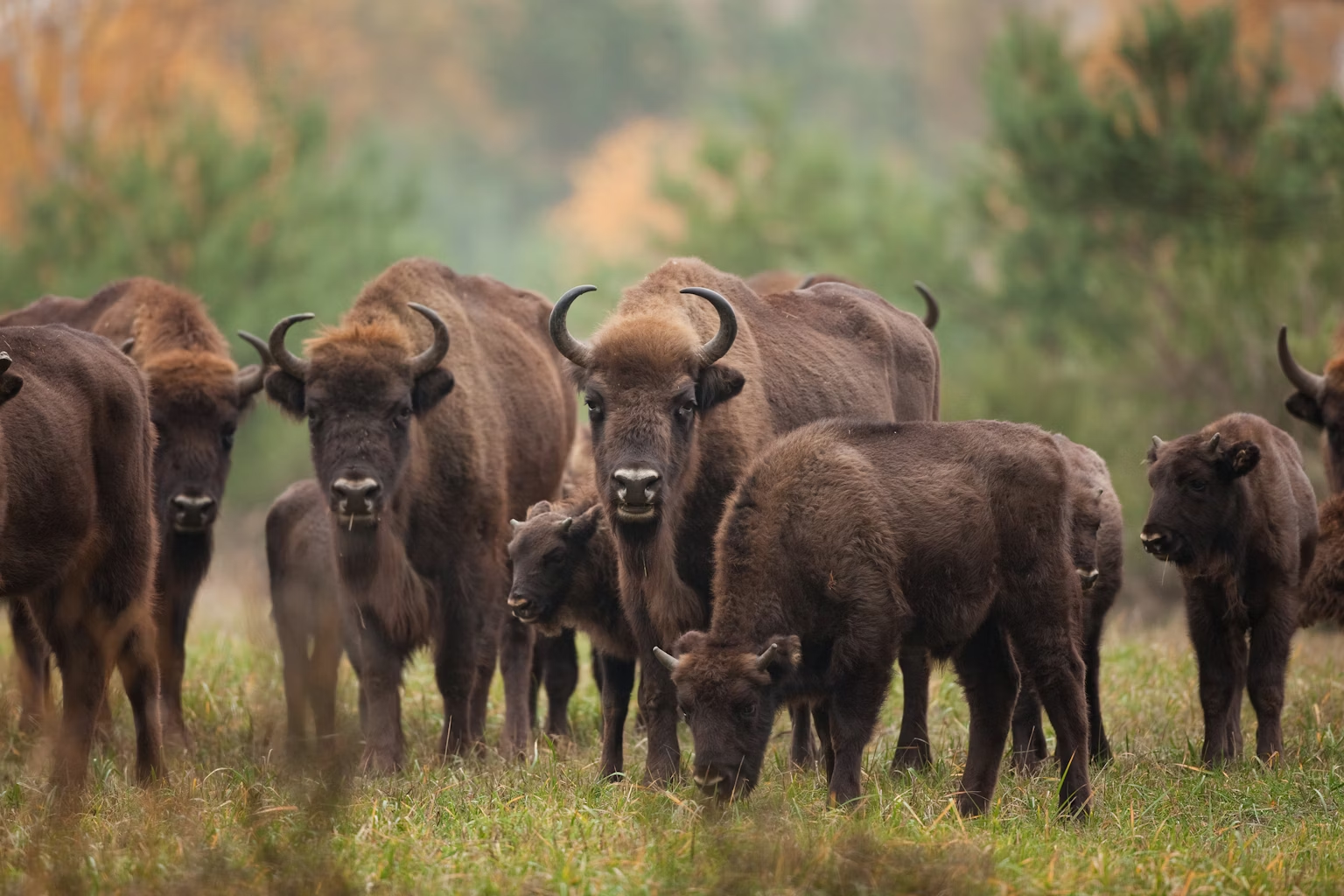
Background story
The European bison teetered on the edge of extinction in Europe and was only saved by a zoo in Poland. Conservation breeding from the few surviving animals, and subsequent reintroductions (in Poland, Germany and Romania, for example) have led to its remarkable recovery. Today, coordinated efforts by European conservation organisations mean it has now been possible to bring bison back to Britain.
The European bison is not native to Britain, but its close relative the globally extinct forest bison Bison schoetensacki was here, at least during the Pleistocene. The surviving European bison is a suitable surrogate for this extinct species.
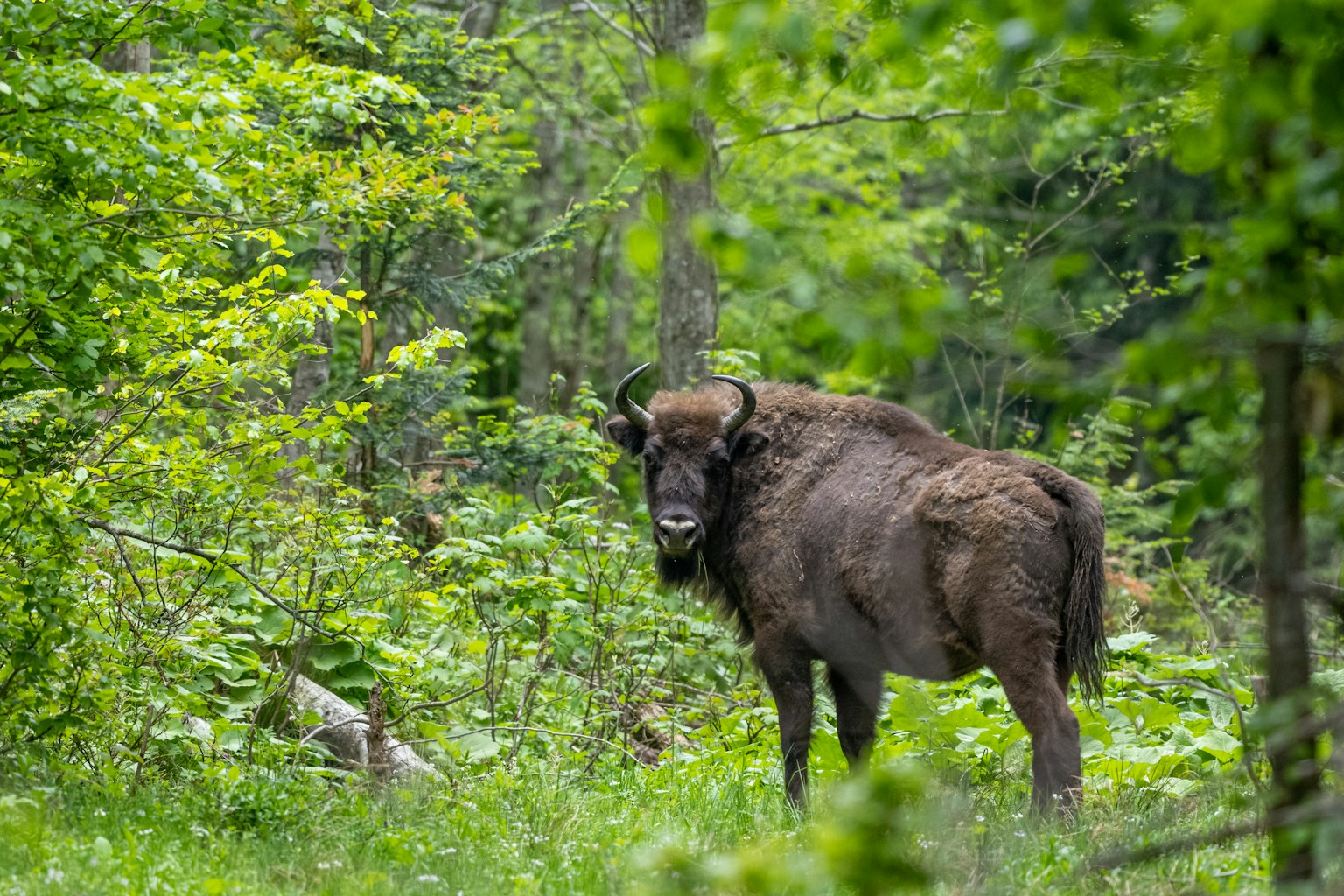
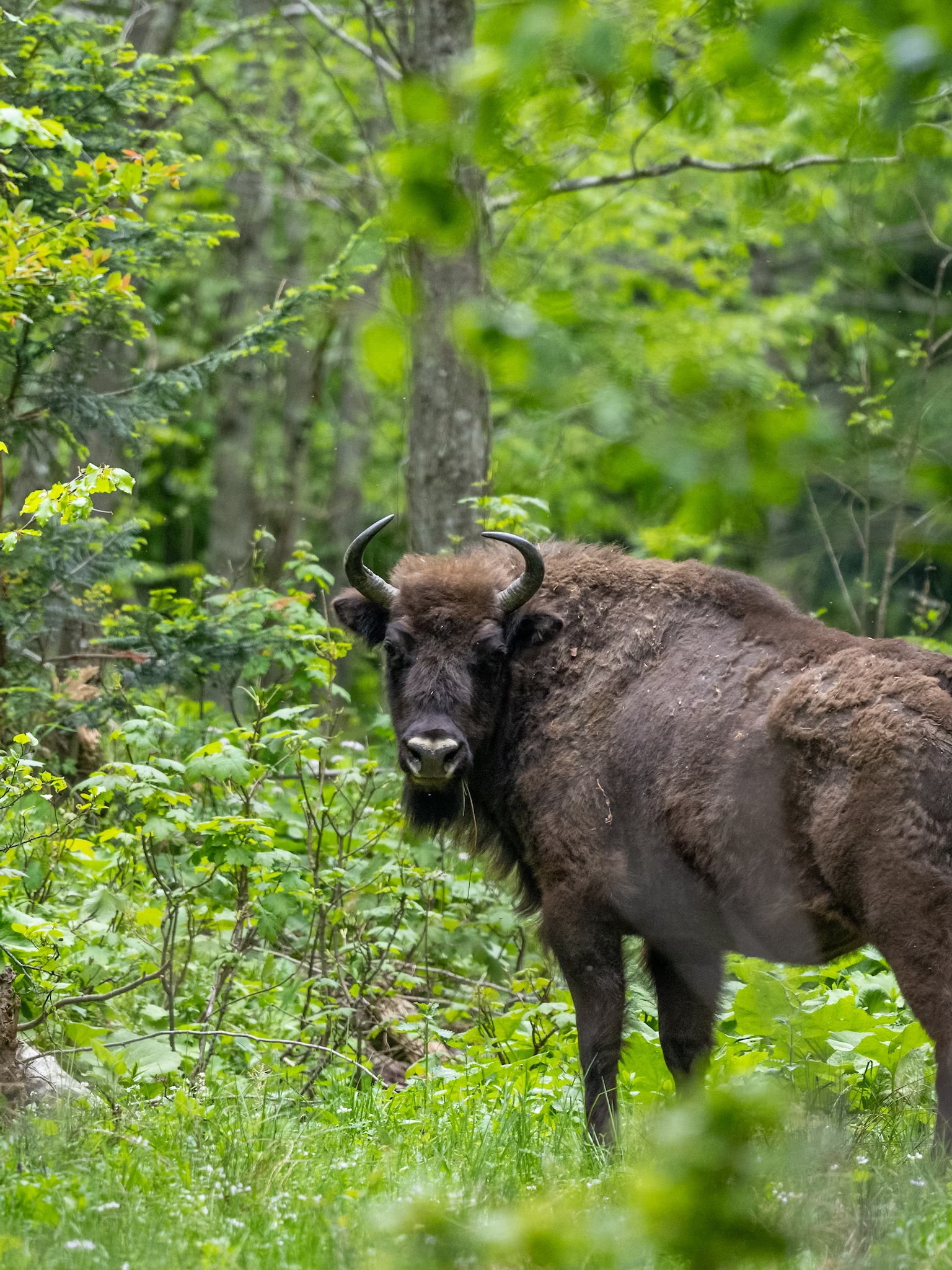
Did you know?
As bison move among trees and shrubs, their thick fur snags on twigs and branches, which song birds use to insulate their nests. Poland’s bison programme has found this leads to more chicks reaching adulthood.
Can we have them in Britain?
Yes. The Wilder Blean project in Kent reintroduced bison in July 2022 to help with woodland recovery and management on a controlled site.
In summary
- Keystone species, creates habitats for all sorts of other wildlife
- A diverse browser and grazer
- Likes grasslands, wetlands, woodlands and a good watering hole
- One of only two surviving bison species (the other is the American bison)
- Heaviest living wild land animal in Europe
